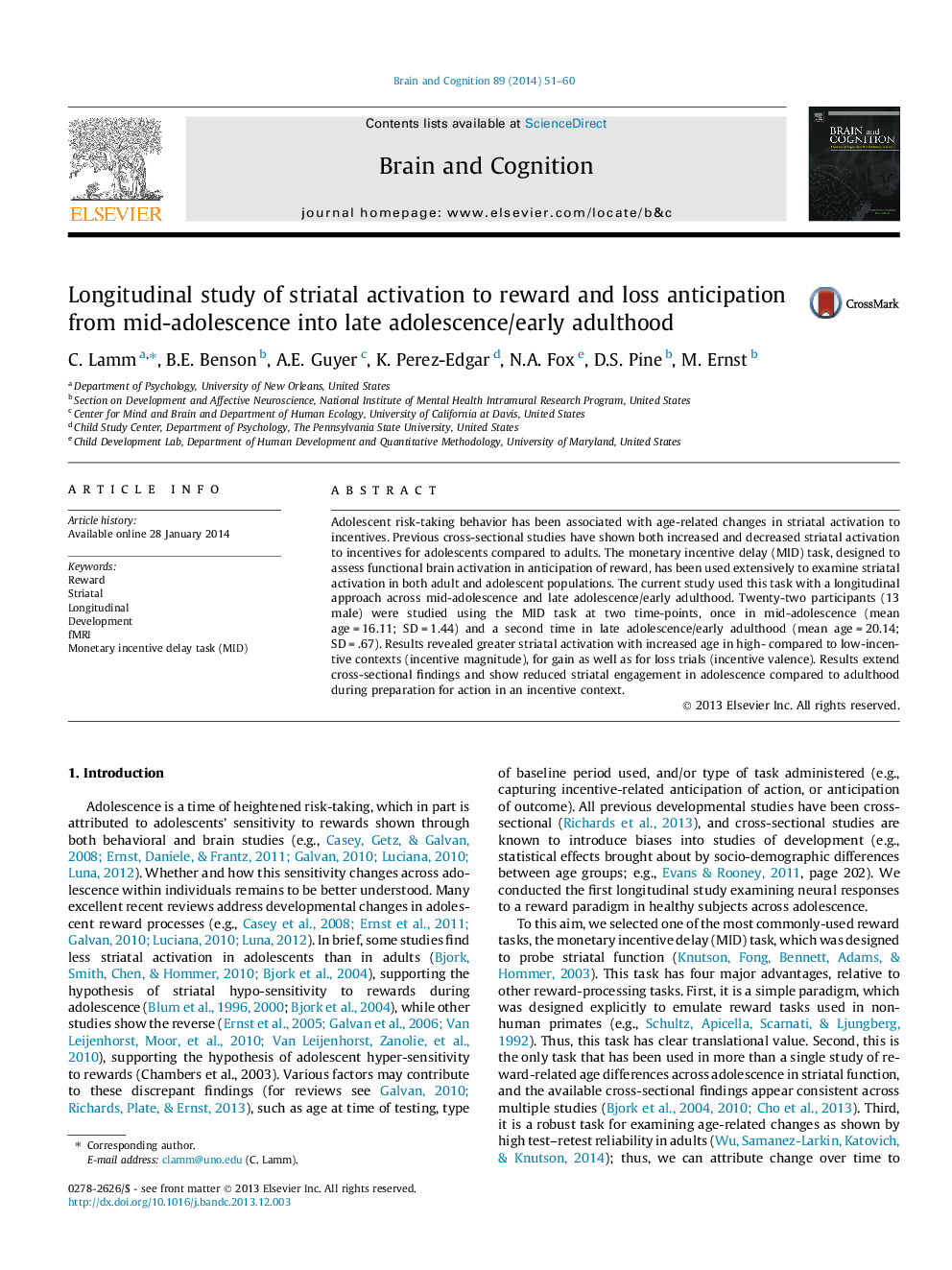| کد مقاله | کد نشریه | سال انتشار | مقاله انگلیسی | نسخه تمام متن |
|---|---|---|---|---|
| 924012 | 1473982 | 2014 | 10 صفحه PDF | دانلود رایگان |
• Clarifies age-related changes in striatal activation to incentives.
• Longitudinal fMRI study using monetary incentive delay task.
• Adults showed greater striatal activation than adolescents.
• Gain and loss trials showed the same pattern of activation.
Adolescent risk-taking behavior has been associated with age-related changes in striatal activation to incentives. Previous cross-sectional studies have shown both increased and decreased striatal activation to incentives for adolescents compared to adults. The monetary incentive delay (MID) task, designed to assess functional brain activation in anticipation of reward, has been used extensively to examine striatal activation in both adult and adolescent populations. The current study used this task with a longitudinal approach across mid-adolescence and late adolescence/early adulthood. Twenty-two participants (13 male) were studied using the MID task at two time-points, once in mid-adolescence (mean age = 16.11; SD = 1.44) and a second time in late adolescence/early adulthood (mean age = 20.14; SD = .67). Results revealed greater striatal activation with increased age in high- compared to low-incentive contexts (incentive magnitude), for gain as well as for loss trials (incentive valence). Results extend cross-sectional findings and show reduced striatal engagement in adolescence compared to adulthood during preparation for action in an incentive context.
Journal: Brain and Cognition - Volume 89, August 2014, Pages 51–60
